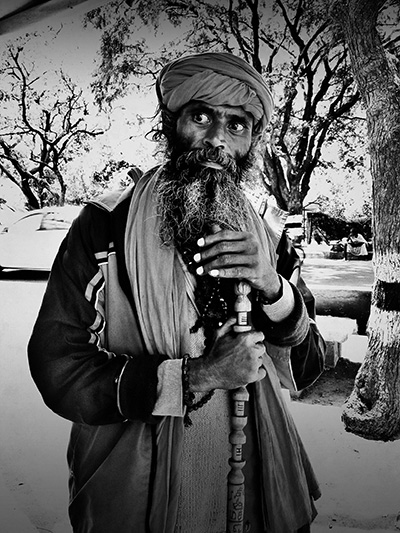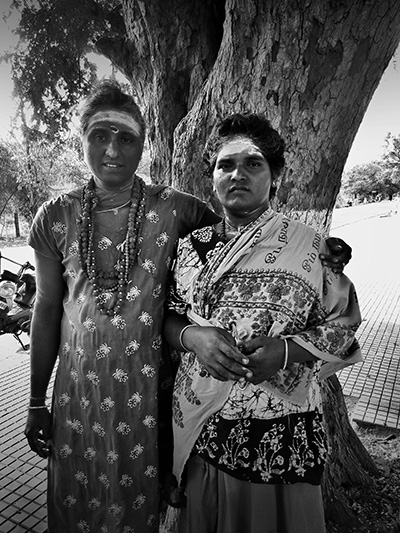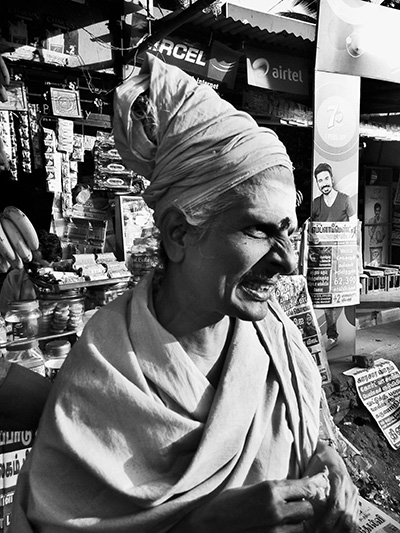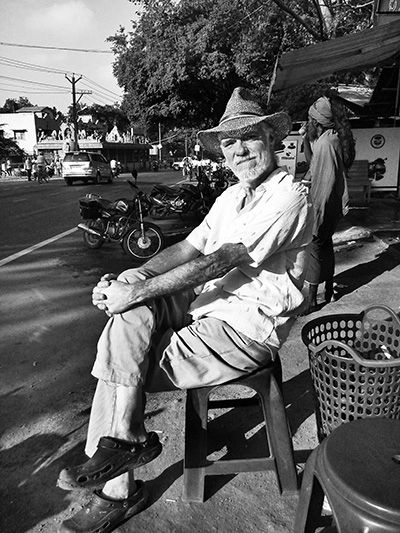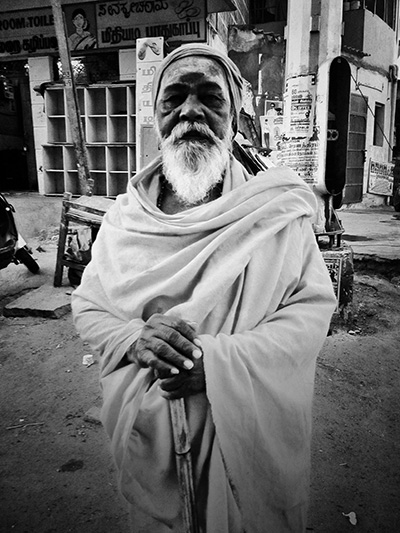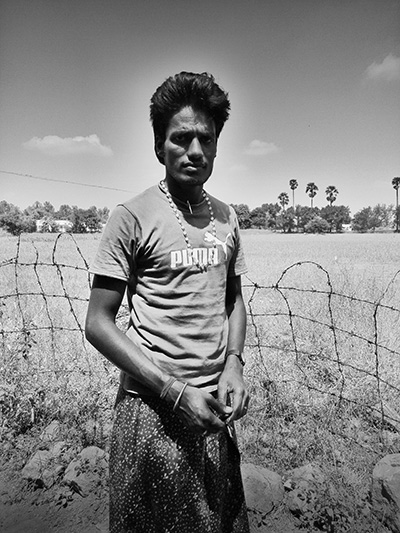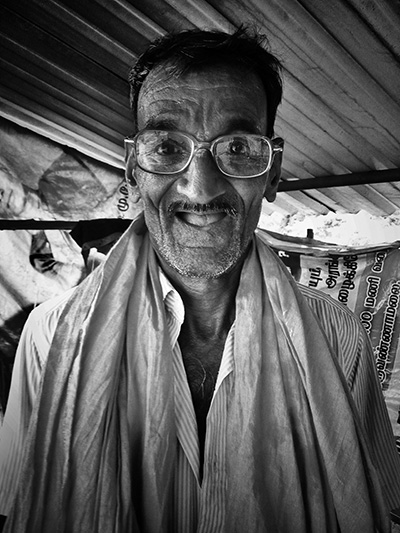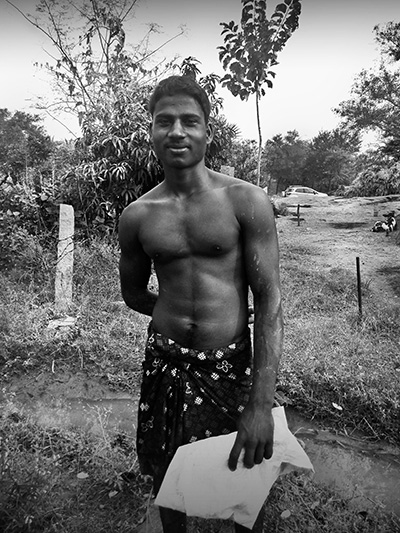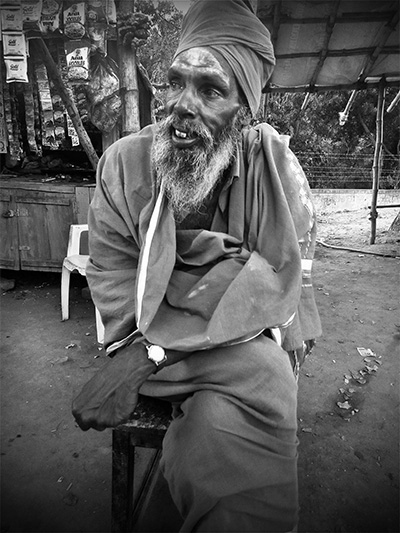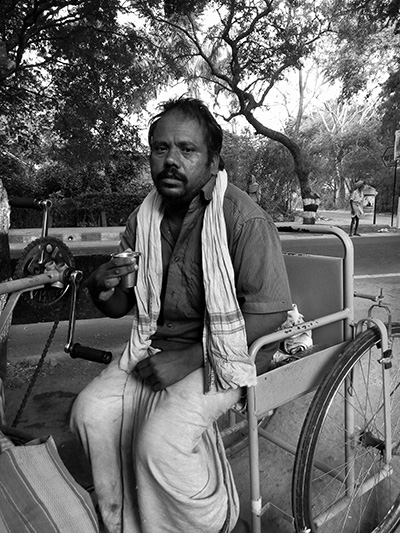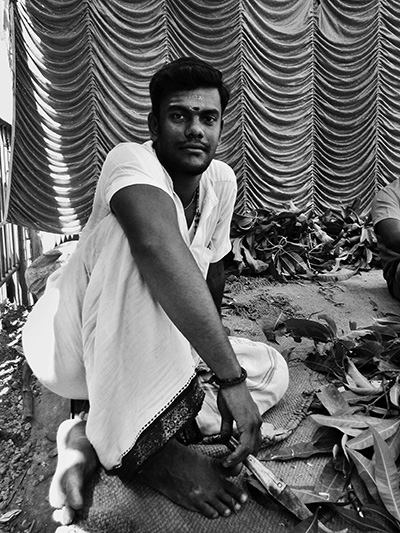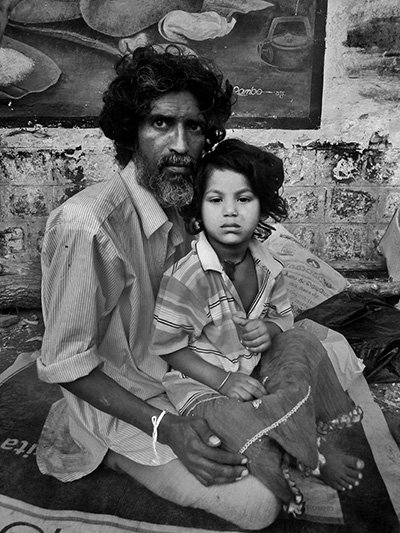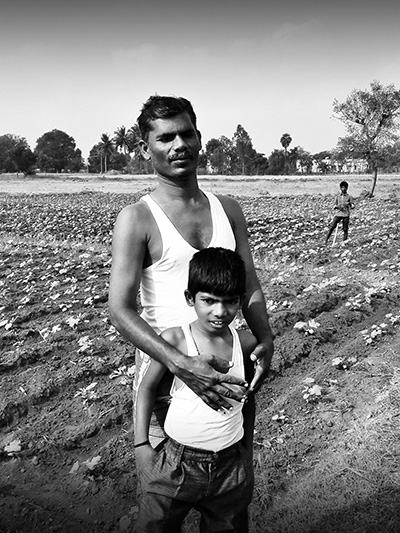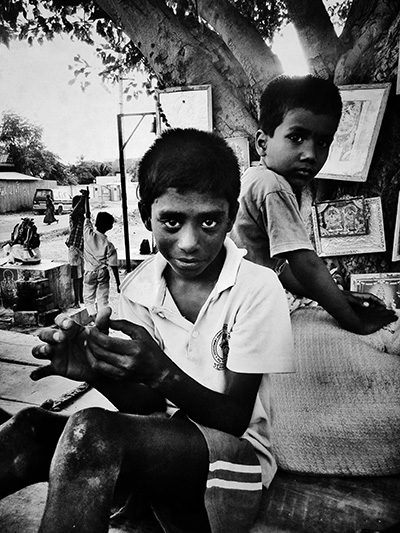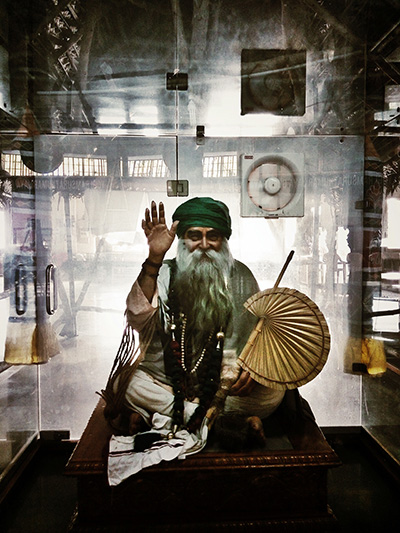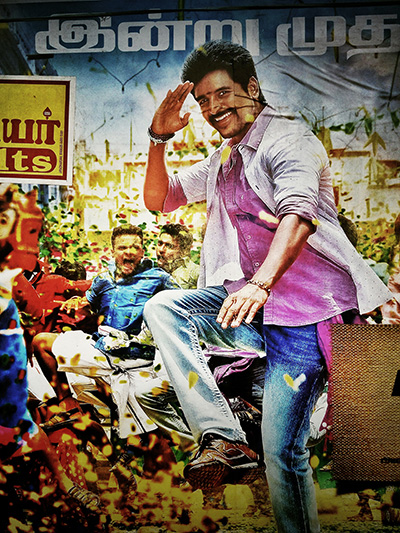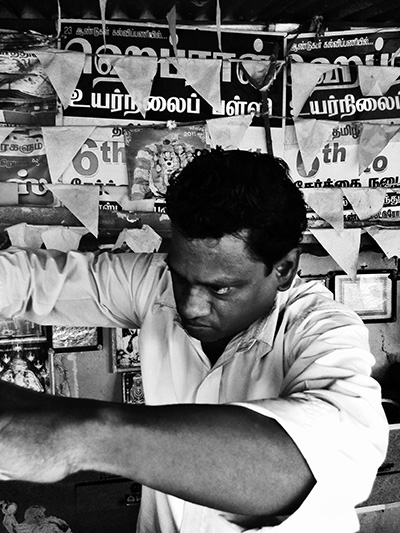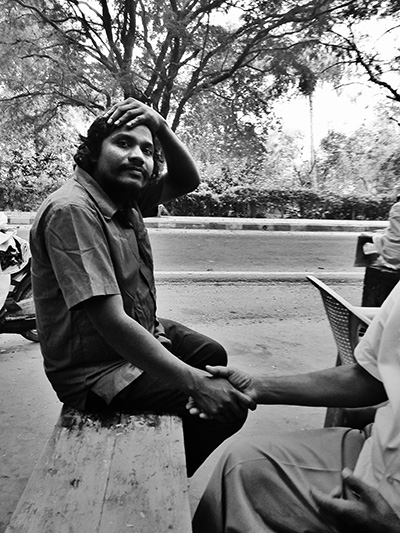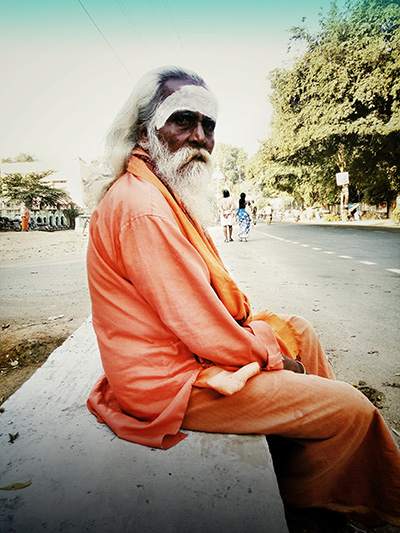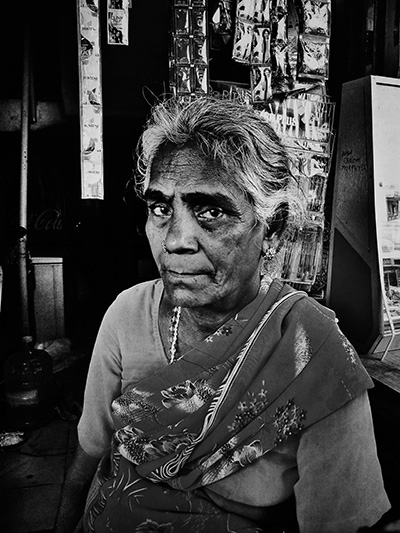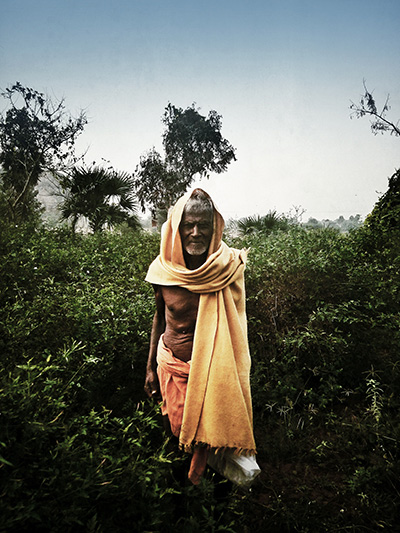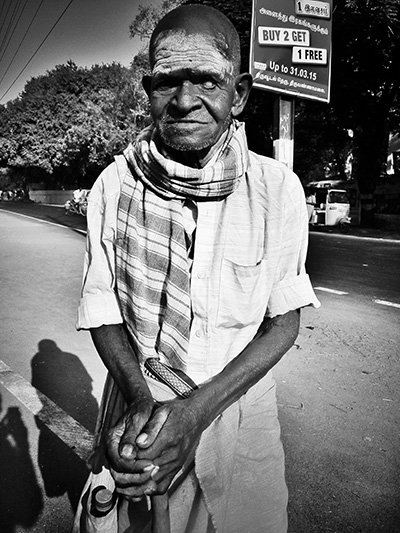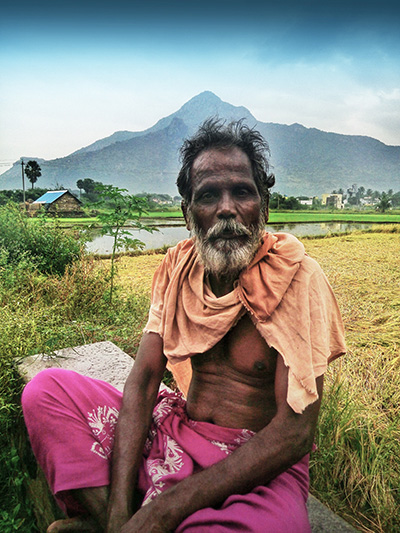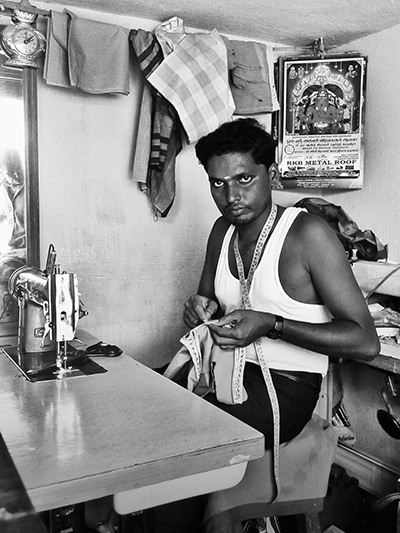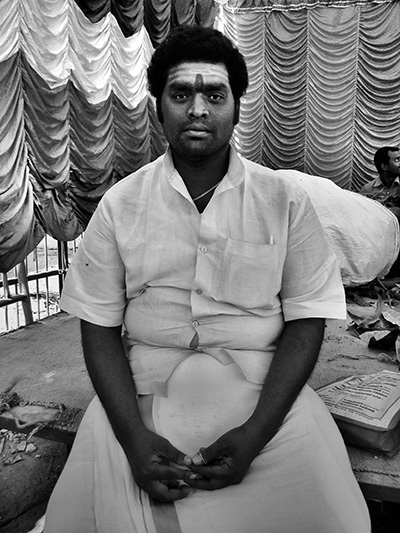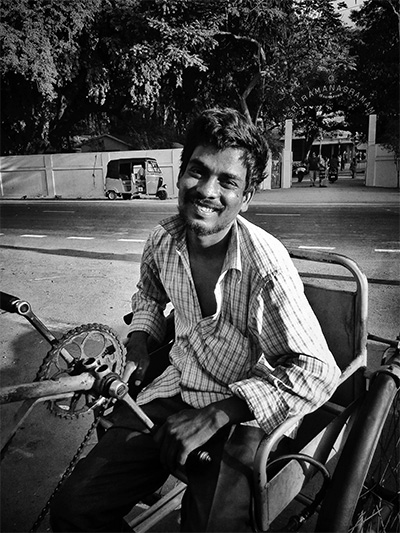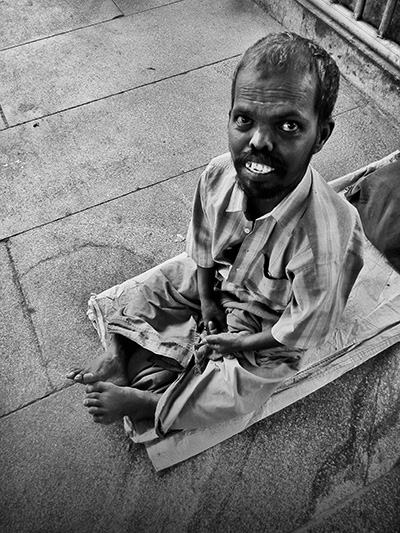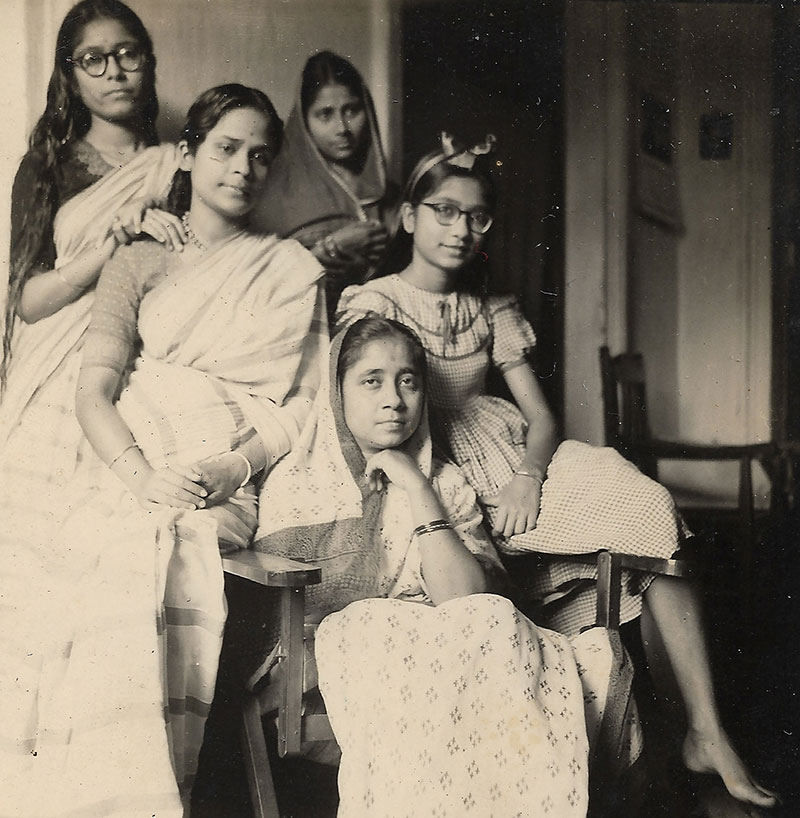Zoom In
Portfolio Review
PhotoMail constructively and
Critically zooms into
The life and work of photographers
Its art and techniques
Contemporary theory
Aesthetics, material philosophy and
Sociology
Arjun Ramachandran
reviews
Abul Kalam Azad’s
Phone Photo Series
Titled 365 days myopic view
done as part of
Project 365 Tiruvannamalai
2014- 2015
365 days myopic view © Abul Kalam Azad
Close Encounters
Abul Kalam Azad’s Phone Photo Series
Aul Kalam Azad has been making smart phone photographs as connecting anecdotes for Project 365. He has created several hundred lo-fi images depicting the life and culture of this ancient town, recording routine or chance meetings, casual events or details of his own daily life. Project 365 public photo archives will be locally preserving these images for public access and research. After traversing through analogue, digital, painted, manipulated images, Abul has consciously shifted to smart phone image making in a bid to utilise its nuances.
His series of smart phone images are titled 365 Days – A Myopic View; it is made of 365 images that are sliced off Abul’s life in Tiruvannamalai. Despite the episodic nature of the series, and of course, of photography itself, there is an innate sense of continuity existing among the images. This owes partially to both the photographer’s solid preferences in composition and choice of subject, and also to the visible growth of certain recurring subjects, sometimes suggesting a gradually developing human story in the background. In general, the images are themselves narrative, but perhaps not in a traditional sense – the narrative is built on the viewer’s knowledge of the culture. This may be true for all image making, but Abul’s choice of medium and conscious utility of this particular kind of narrative-building makes a marked difference in the unfolding of stories. While rooted in the photographer’s own personal and social life in the town, they provide observations and insights into the cultural, artistic, architectural and historical truths, while some images maintain a whimsical touch.
365 days myopic view © Abul Kalam Azad
Smart phone images by themselves readily seem to bring in an element of autobiography. The daily events are most often captured through them, almost always in a moment of subconscious composition and judgement. There is a lack of formality or any veil of pretention that a bulky professional camera might induce even though the pretentions and mannerisms of the “real world” remain intact, as the smart phone remains nearly invisible between the subject and the artist. Even in staged portraits captured on smart phones, the posture of the subject becomes much more free. The smart phone becomes something of a non-intervening observer, not affecting the system at all.
The myopic eye of the smart phone demands that the photographer has to be within a certain “intimate” distance to take a photograph. There has to be a certain connection between the one who is being photographed and the photographer himself – using a smart phone to create portraits of people means that the photographer is not a mere witness; the one who is photographed often looks straight into the camera and thus, at the photographer. A reflection of the effect of eye contact between the photographer and the subject is captured in the portrait.
This presence of intimacy is what a spectator relates to in these images. As personal spaces become increasingly reserved and physical contact becomes restricted in a wave of conservative urban-elite influence, this welcome intrusion of a nonprofessional-appearing, smart-phone-wielding photographer into touching distances of the subject is a reminder of the extent of simplicity and freedom in human relationships.

Arjun Ramachandran is a young student of mass communication, with interests in cinema and literature.
Published on July 28, 2016
Share
Related Articles

In my taxi, when a photo artist becomes a cab driver
What motivated Weideman to keep photographing? The answer to this is also an important quality that makes his photographs intriguing. He continued shooting even though he was not exhibiting nor getting into any sort of limelight until the mid-90s. Passion for the medium, of course. But there is more.
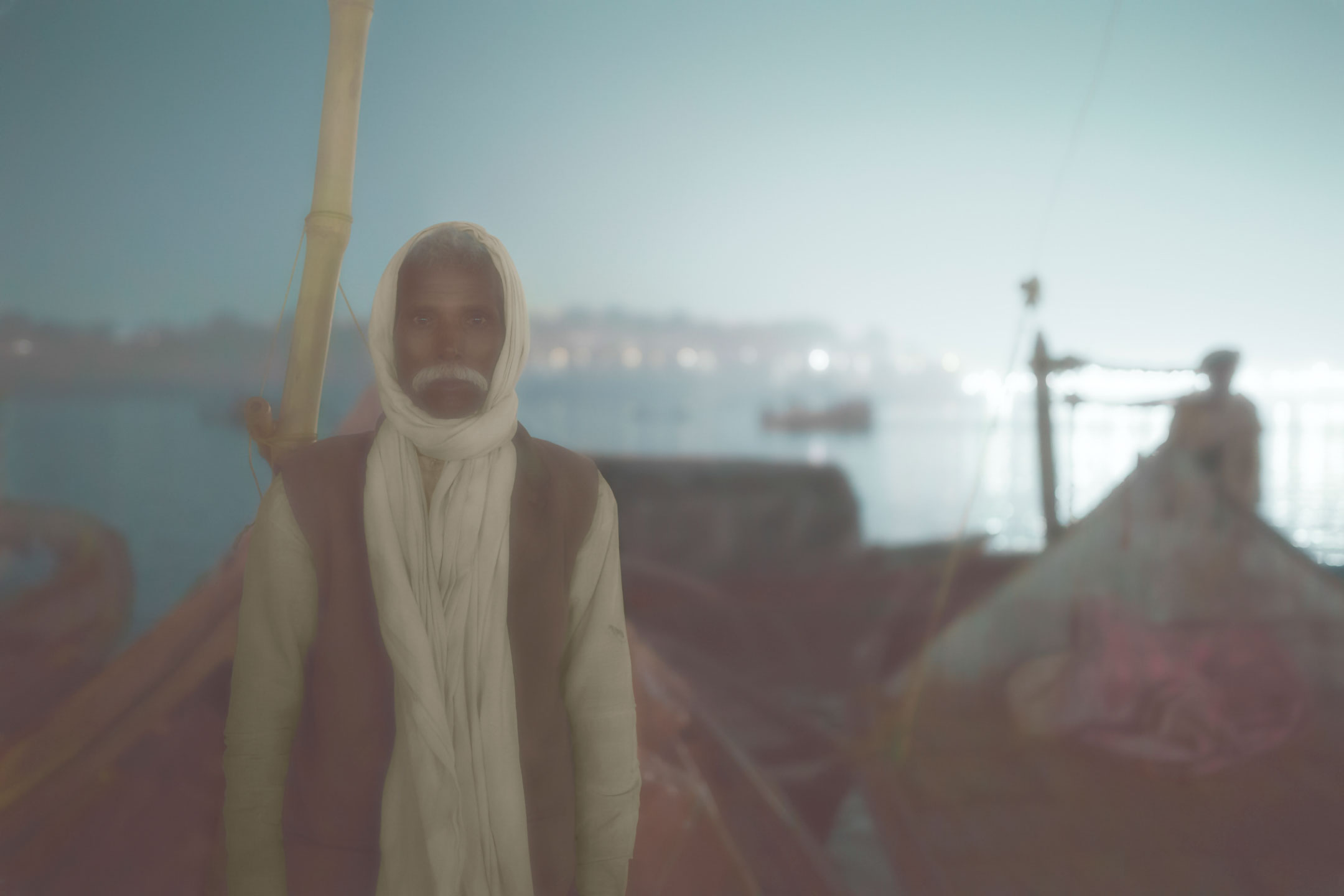
Mallaahs, the boatmen of Gangetic geography, A Photo Art series by Shibu Arakkal
Review of Mallahs, the boat of Gangetic geography, photographic series of Shibu Arakkal. For several hundred years these boatmen on the Ganga and the Yamuna have handed down their oars from father to son. I was intensely drawn to the purpose of their lives, to carry people back and forth on these rivers. Almost married to their boats, these men. To live almost all of their lives on these wooden vessels, going about their worldly chores and belonging to a tribe of menfolk, they pride themselves on being the real caretakers of these mystical rivers. Almost as if they are born on these boats and just as possibly may breath their last on it, the Mallaah men live lives removed from their families and children.
In search of the lost home
Across the world there are ongoing attempts to construct a ‘people’s history’ through photographs. Memory Projects, they are fondly called, focus mainly on the pre-digital era when photography was not as common as today. Bengali photographer Anandarup Goswami’s photography series ‘A Home of No Return’, though not directly linked with any memory project, shows certain resemblances with the latter’s style, and yet carries its own soul. A Home of No Return visually narrates the past and the present through a mixture of faded and fresh photographs.
Homomorphism II
The LGBTQ community has found for itself public spaces in urban regions. We will wait and see what they want to tell the world from that space. After all, solidarity with the cause does not mean solidarity with the acts, and it is time for the community to begin to act convincingly. This exhibition is a good starting point, and further on, there is a desperate need for clarity on the part of the activist-artists.

Elements and Fragments, Uncovering Narratives of a Temple Town
Inasmuch, every photographer that ever visited Tiruvannamalai never took notice about anything other than Ramana and the Annamalaiyar temple – their eyes glossing over everything else and their focus devoted entirely to the two ‘divine’ icons. But, there remains a Tiruvannamalai beyond, which has gone unnoticed and undocumented – invisible to the colonial gaze that is pre-occupied with its exotic fairy tales, and underwhelming for the photojournalist due to its perceived mundane-ness.


